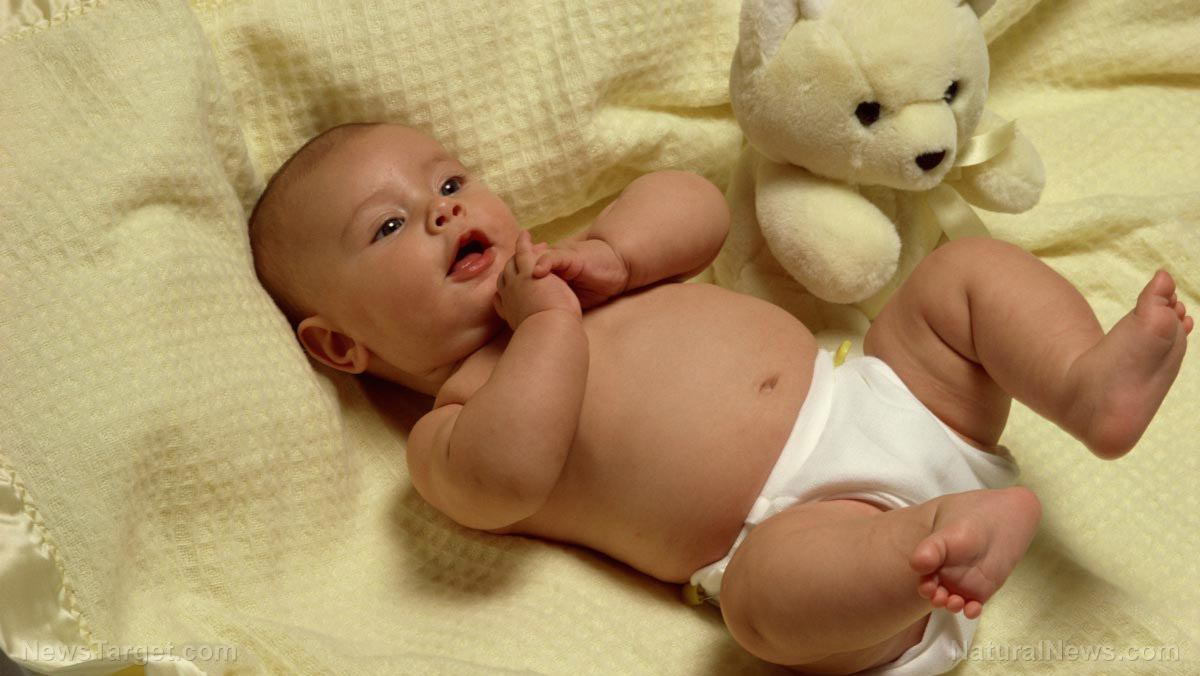
While many health enthusiasts have spoken out about the dangerous chemicals hidden in our food supply and other consumer products, the toxins lurking in disposable diapers have been flying under the radar for years. For many parents, the time has come to demand that big business do its due diligence and stop poisoning the most vulnerable members of our society with toxin-laden nappies.
French government finds diapers are loaded with toxins
A shocking new report from the French Agency for Food, Environmental and Occupational Health and Safety (ANSES) reveals that disposable diapers are loaded with harmful contaminants including glyphosate -- the controversial key ingredient for Monsanto's Roundup herbicide -- along with traces of other pesticides, carcinogenic fragrance chemicals, PCBs, dioxins and volatile organic compounds.
“Exceedances of health thresholds” (calculated on the basis of the reference toxic values) have been demonstrated for several substances under “realistic” conditions of use, i.e. a total of about 4,000 diapers used by a child between 0 and 3 years old. These are fragrance substances (butylphenylmethylpropional or Lilial®, hydroxyisohexyl 3-cyclohexene carboxaldehyde or Lyral®), many PAHs such as benzo (a) pyrene, dioxins, furans and DL-PCBs.
Many of the chemicals found in diapers are known for their carcinogenic, mutagenic and reprotoxic effects. What this means is that these are compounds known to cause damage to cells and DNA capable of disrupting normal hormonal and reproductive function -- as well as potentially causing cancer.
And these are the things we wrap millions of children in every day.
ANSES was alarmed by the findings and are now recommending that these chemicals be removed from diapers. Health officials from the agency concluded their report by stating "[I]t is not possible to exclude a health risk related to the wearing of disposable diapers."
The great diaper debacle
As Natural Health 365 reports, even diapers that were labeled as "ecological" or eco-friendly were found to be contaminated with toxic chemicals. In total, ANSES tested 23 different diapers between 2016 and 2018. The average diaper tested contained around 60 different hazardous chemicals.
Children wear an estimated 4,000 diapers in just the first few years of life -- and they are wearing them pretty much 24/7, which means their little bodies are being inundated with pesticides, dioxins and other harmful compounds just about every hour of every day for those first three years.
It goes without saying that these chemicals have likely never been tested for what harmful effects they can cause when there's a constant stream of exposure. The sham of chemical "testing" and approval has been widely reported on by Natural News.
There is astonishingly little "real world" analysis of how most chemicals affect people in practical applications. Safety testing for pesticides is already known to be woefully inadequate. It stands to reason that virtually every other "approved" chemical, whether it be a food additive or an industrial solvent (or both!) suffers the same inadequacy.
Experts outside of industry influence agree that it is virtually impossible for pesticide manufacturers to guarantee even the smallest modicum of safety when manufacturers are not even required to see how their pesticide will interact with other common agrichemicals. There is no research on how pesticides or fragrance chemicals will interact with each other, with medications or any other substance they may come into contact with after leaving the factory.
And when one compound gets banned for being toxic, the industry just starts using a new chemical that's just as toxic. Truly, the entire process of government approval is nothing but a joke.
Learn more about what hazards may be hiding in your home at Toxins.news.
Sources for this article include:
Please contact us for more information.






















